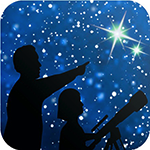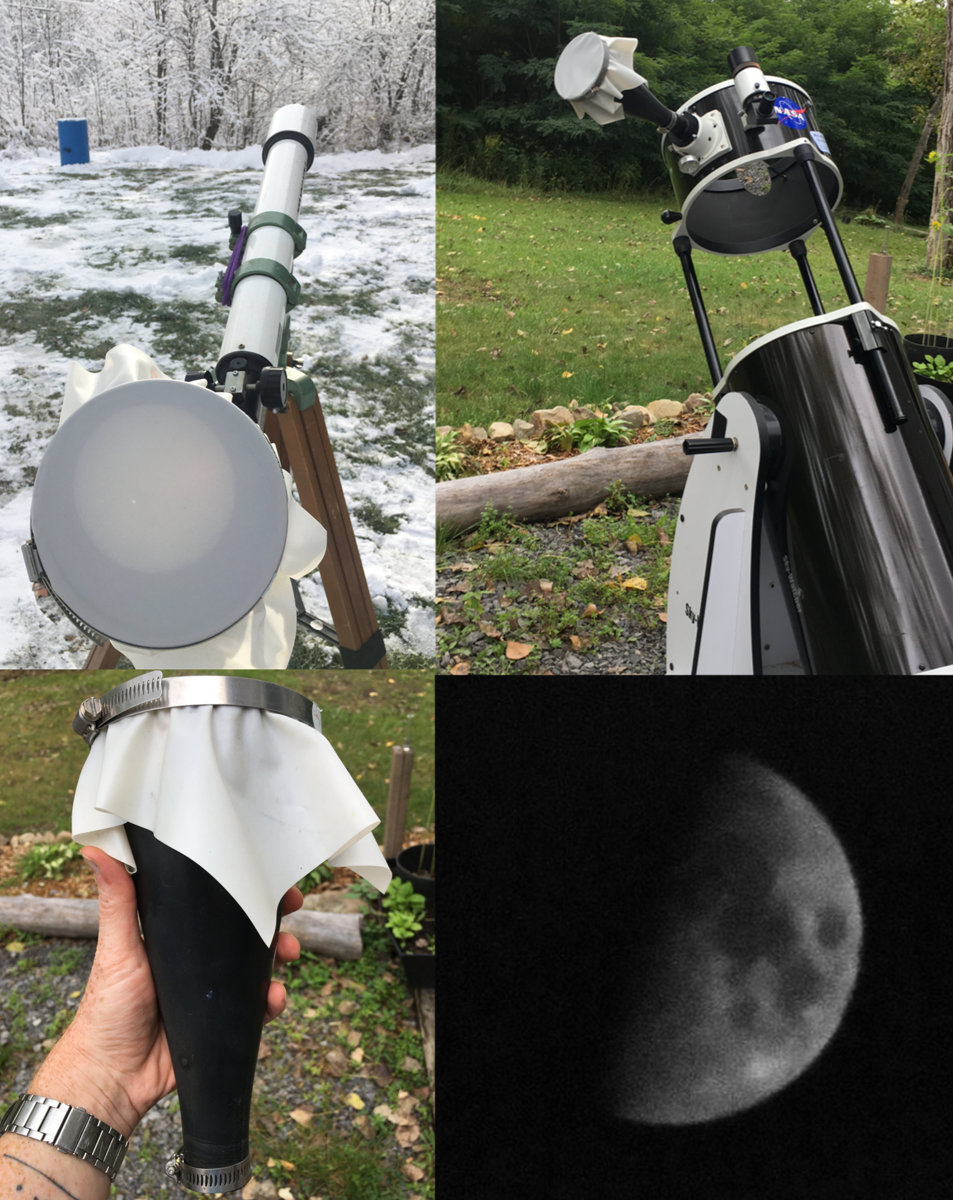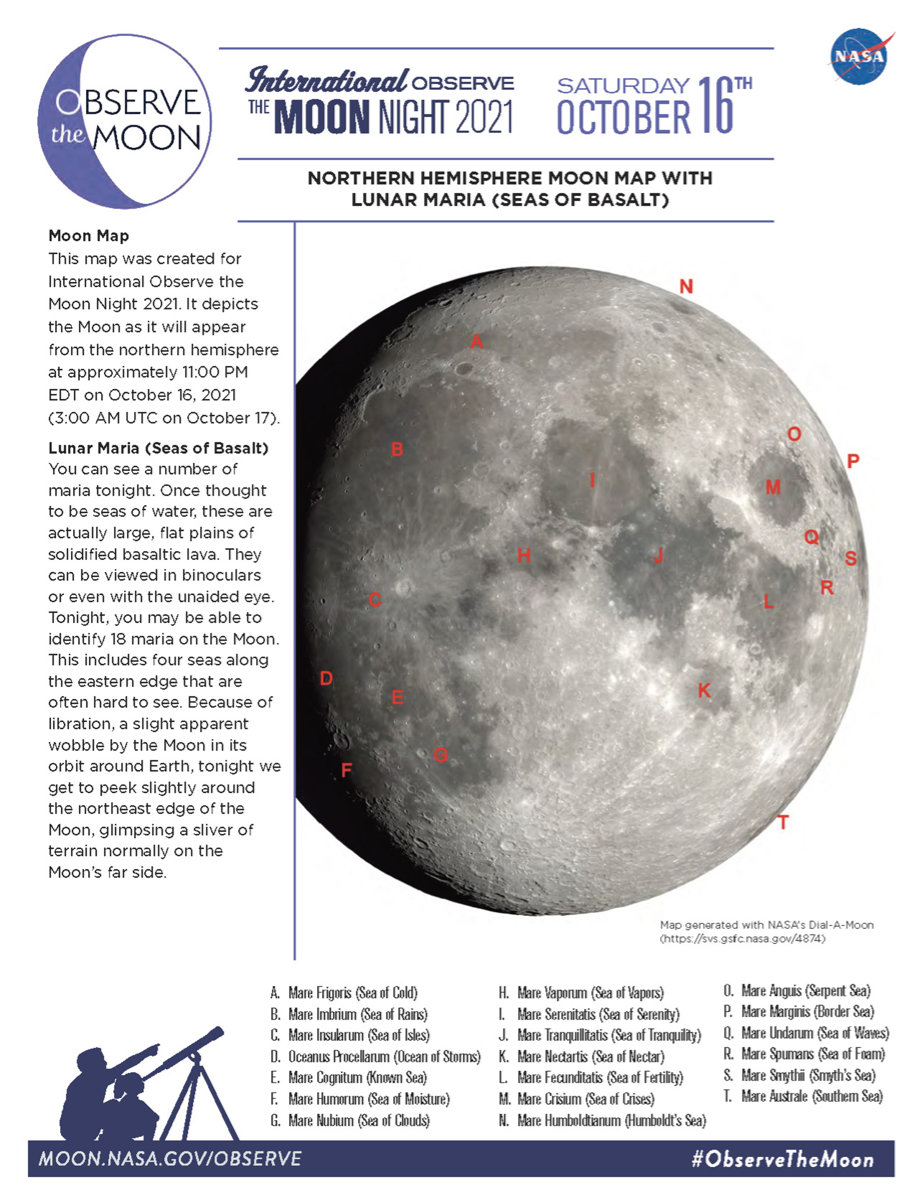International Observe the Moon Night is on October 16 this year– but you can observe the Moon whenever it’s up, day or night! While binoculars and telescopes certainly reveal incredible details of our neighbor’s surface, bringing out dark seas, bright craters, and numerous odd fissures and cracks, these tools are not the only way to observe details about our Moon. There are more ways to observe the Moon than you might expect, just using common household materials.
Put on a pair of sunglasses, especially polarized sunglasses! You may think this is a joke, but the point of polarized sunglasses is to dramatically reduce glare, and so they allow your eyes to pick out some lunar details! Surprisingly, wearing sunglasses even helps during daytime observations of the Moon.
One unlikely tool is the humble plastic bottle cap! John Goss from the Roanoke Valley Astronomical Society shared these directions on how to make your own bottle cap lunar viewer, which was also suggested to him by Fred Schaaf many years ago as a way to also view the thin crescent of Venus when close to the Sun:
“The full Moon is very bright, so much that details are overwhelmed by the glare. Here is an easy way to see more! Start by drilling a 1/16-inch (1.5 mm) diameter hole in a plastic soft drink bottle cap. Make sure it is an unobstructed, round hole. Now look through the hole at the bright Moon. The image brightness will be much dimmer than normal – over 90% dimmer – reducing or eliminating any lunar glare. The image should also be much sharper because the bottle cap blocks light from entering the outer portion of your pupil, where imperfections of the eye’s curving optical path likely lie.” Many report seeing a startling amount of lunar detail!
You can project the Moon! Have you heard of a “Sun Funnel”? It’s a way to safely view the Sun by projecting the image from an eyepiece to fabric stretched across a funnel mounted on top. It’s easy to make at home, too – directions are here: bit.ly/sunfunnel. Depending on your equipment, a Sun Funnel can view the Moon as well as the Sun– a full Moon gives off more than enough light to project from even relatively small telescopes. Large telescopes will project the full Moon and its phases, with varying levels of detail; while not as crisp as direct eyepiece viewing, it’s still an impressive sight! You can also mount your smartphone or tablet to your eyepiece for a similar Moon-viewing experience, but the funnel doesn’t need batteries.
Of course, you can join folks in person or online for a celebration of our Moon on October 16, with International Observe the Moon Night – find details at moon.nasa.gov/observe. NASA has big plans for a return to the Moon with the Artemis program, and you can find the latest news on their upcoming lunar explorations at nasa.gov.
Sun Funnels in action! Starting clockwise from the bottom left, a standalone Sun Funnel; attached to a small refractor to observe the transit of Mercury in 2019; attached to a large telescope in preparation for evening lunar observing; projection of the Moon onto a funnel from a medium-size scope (5 inches).
Safety tip: NEVER use a large telescope with a Sun Funnel to observe the Sun, as they are designed to project the Sun using small telescopes only. Some eager astronomers have melted their Sun Funnels, and parts of their own telescopes, by pointing them at the Sun – large telescopes create far too much heat, sometimes within seconds! However, large instruments are safe and ideal for projecting the much dimmer Moon. Small telescopes can’t gather enough light to decently project the Moon, but larger scopes will work.
You can download and print NASA’s observer’s map of the Moon for International Observe the Moon Night! This map shows the view from the Northern Hemisphere on October 16 with the seas labeled, but you can download both this map and one of for Southern Hemisphere observers, at: bit.ly/moonmap2021 The maps contain multiple pages of observing tips, not just this one.
This article is distributed by NASA Night Sky Network
The Night Sky Network program supports astronomy clubs across the USA dedicated to astronomy outreach. Visit nightsky.jpl.nasa.gov to find local clubs, events, and more!



